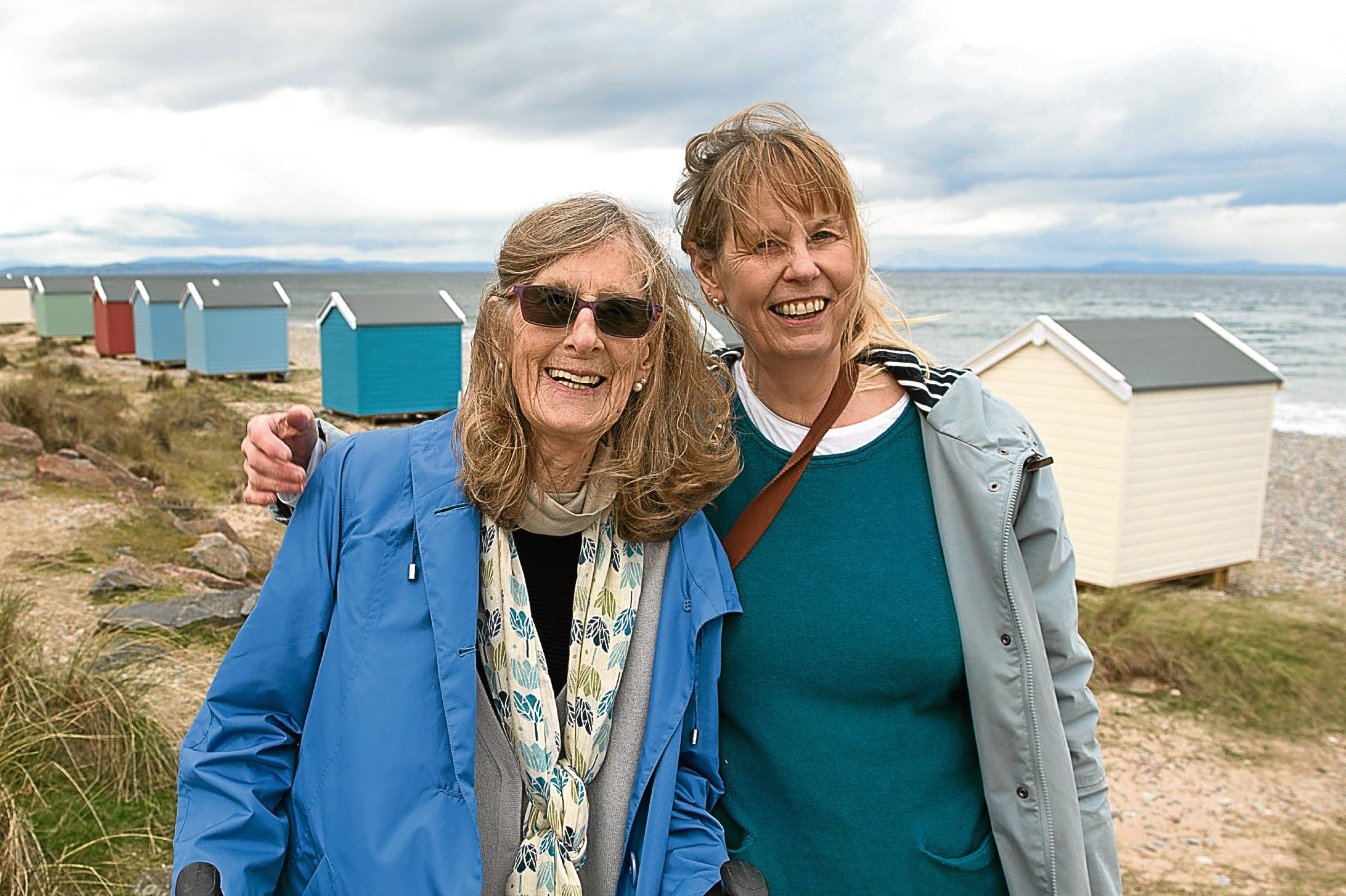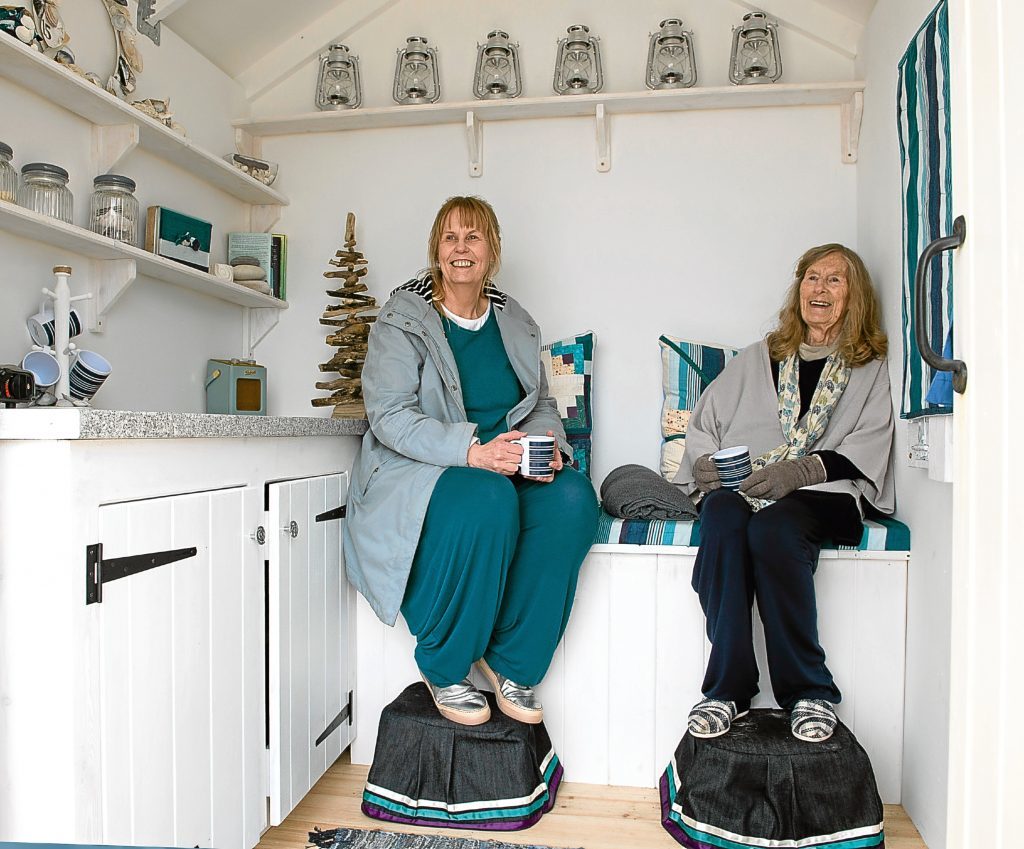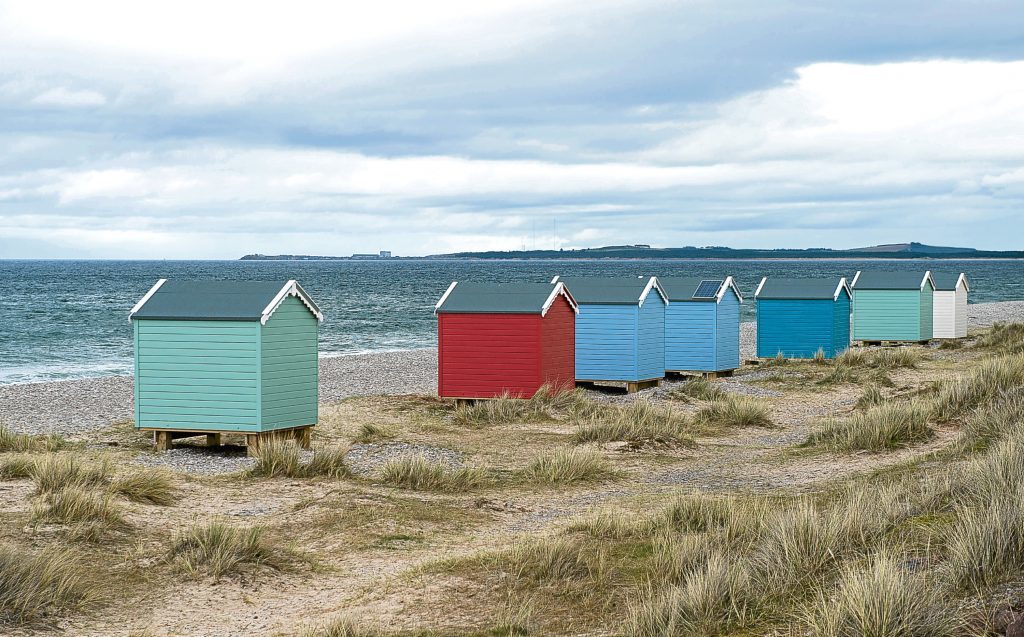
IF you’ve ever been caught out by Scotland’s habit of cramming four seasons into one day, you’ll understand the appeal of a beach hut.
We would all jump at the chance to nip inside to avoid a downpour when we’re decked out in shorts and a T-shirt, but is that pleasure really worth £25,000?
Judging by the popularity of huts which have popped up on one of the north of Scotland’s nicest beaches, the answer to that question appears to be yes.
There might not be any windows, running water or even electricity on offer but as far as comfortable spots to watch seals playing in the Moray Firth go, there aren’t many better places.
Retired teacher Dr Jane Miller, 60, was one of the first to buy one of the huts, at Findhorn beach. She visits regularly from Forres with her 82-year-old mum, Marina.
“Anyone who is stressed should get a beach hut, it’s absolutely lovely,” she said. “It makes you focus on what is really important, which is the natural world. We bring a radio down with us but often we don’t even put it on, the sound of the sea is so beautiful.”
A sideboard, sitting bench, table and chairs fit inside Jane’s hut, which measures around two by two-and-a-half metres. She loves to sit and spend time on her artwork or go for a stroll along the beach.
As for the cost, she’s in no doubt it’s worth the outlay.
“I have always wanted one,” she said. “I’d never seen one for less than £40,000 before.
“Some people might spend their money on a car when they retire but I chose this.
“The effect it has on your lifestyle is brilliant. You’re able to be outside at the seaside when you otherwise wouldn’t be able to because, let’s face it, we’re in the north of Scotland.”
In the neighbouring hut, occupational therapist Paula Harte, 56, is equally in love with the location.
“I even came down here on Christmas Day and it was lovely, so idyllic,” she said.
“I take a pair of binoculars down and watch seals from the hut. In the south of England you’re looking at £80-90,000 for something similar – astronomical prices.
“The view we have here is amazing and the peace is really something quite special.”
There are 10 huts but developer Ian Sutherland McCook has planning permission for a further 20.
Huts were originally built in the area in the ’30s but the decline in popularity of the UK beach holiday led to their demise.
Ian saw an opportunity to reinstate them but not everyone shared his vision.
Campaigners, claiming they would spoil the beach, challenged Moray Council’s decision to grant planning permission and even raised £12,000 to take their case to the Court of Session, but they were unsuccessful.
“These huts are built to last,” said Ian. “They are capable of withstanding severe winter storms, the walls are triple-layered and the huts weigh almost two tonnes.
“We think nothing of paying £15,000 for a car that’s worth almost nothing in 10 years. The value of the hut in 20 years will have doubled.”

Enjoy the convenience of having The Sunday Post delivered as a digital ePaper straight to your smartphone, tablet or computer.
Subscribe for only £5.49 a month and enjoy all the benefits of the printed paper as a digital replica.
Subscribe
